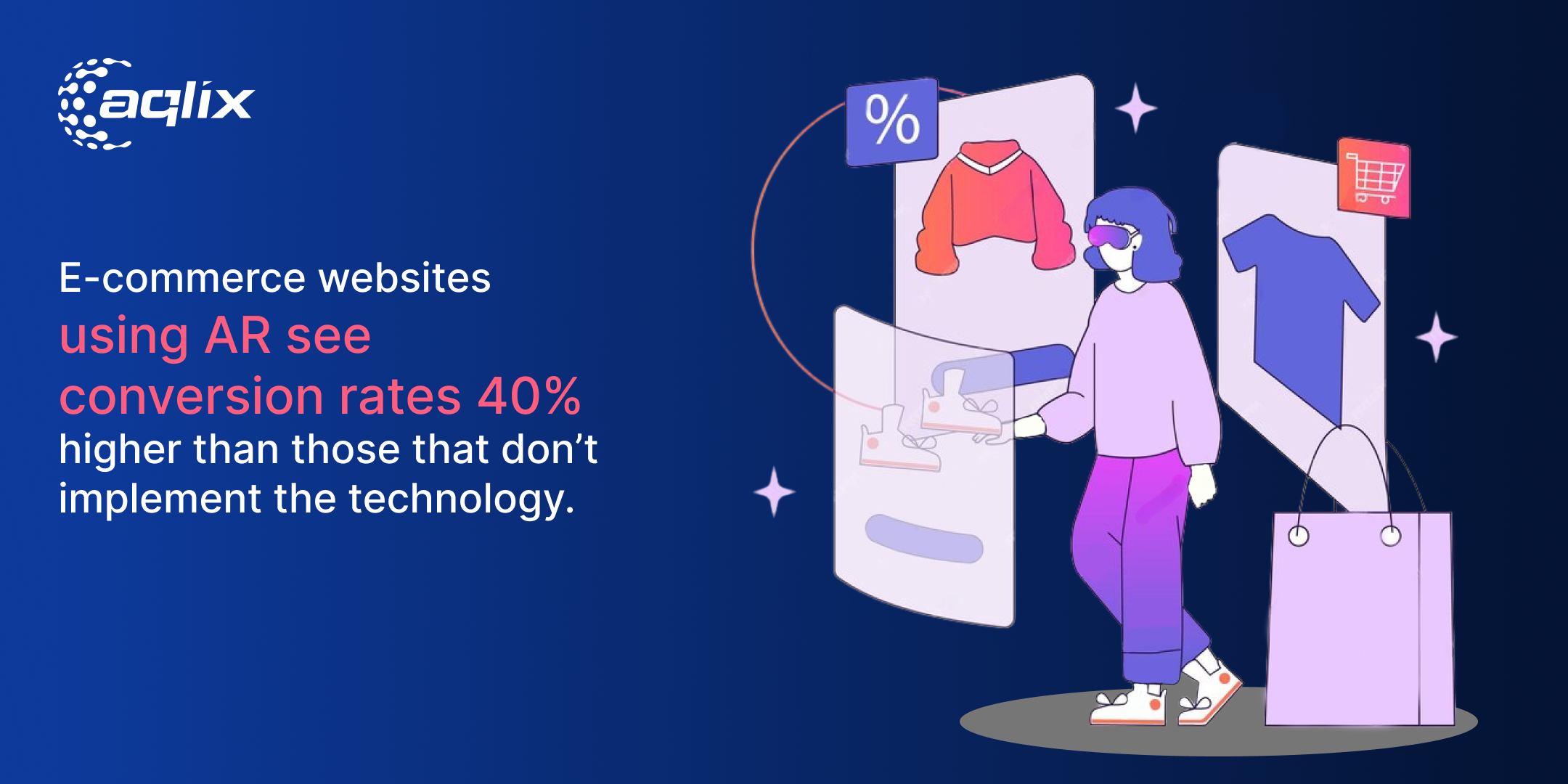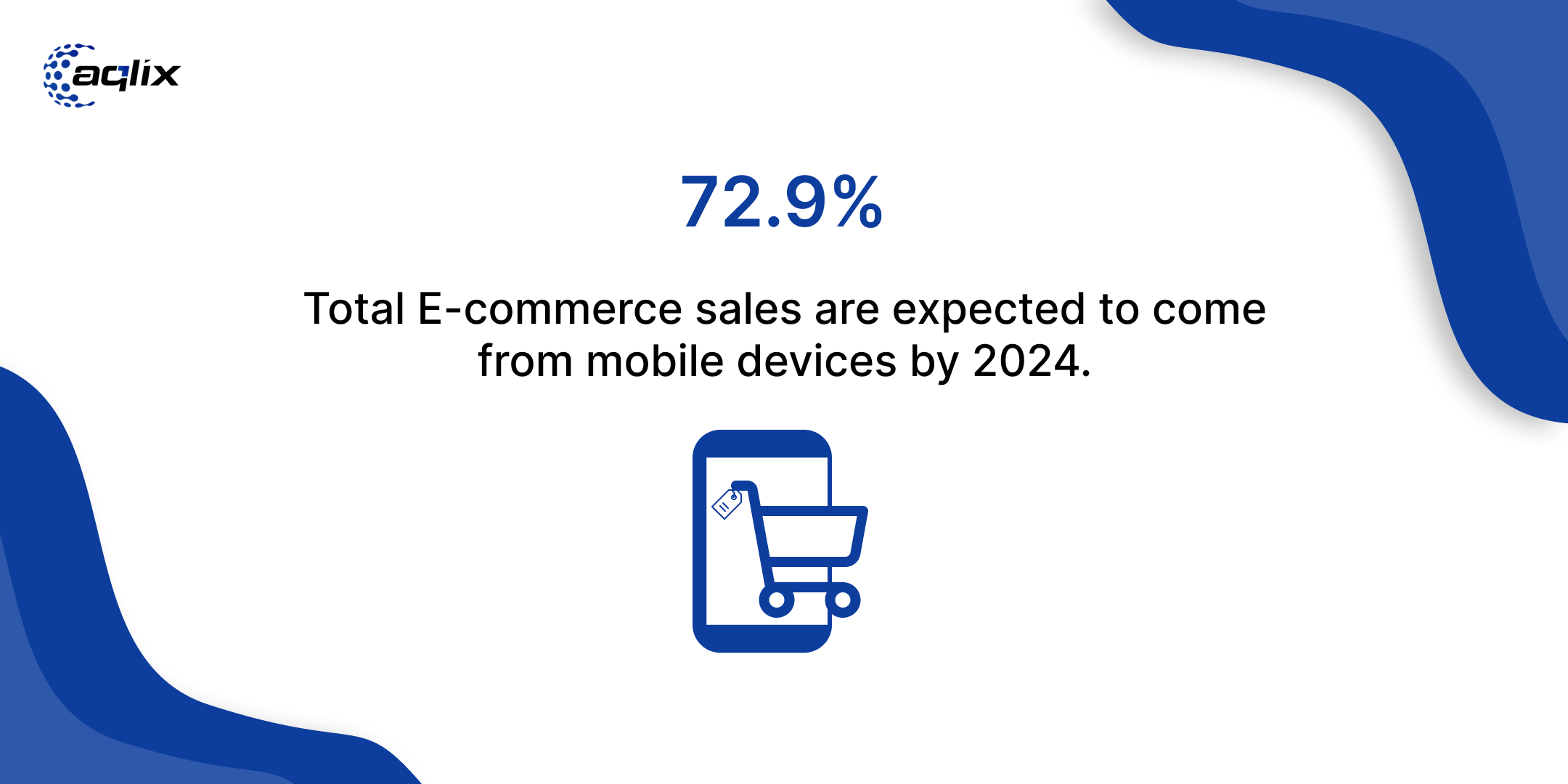While in-person shopping is back in full swing, e-commerce continues to thrive. In fact, experts predict worldwide retail e-commerce sales will climb from about 6 trillion US dollars to just over 8 trillion dollars by 2026.
In 2024, e-commerce has become indispensable for businesses looking to sell their products and services online. With the rise of mobile shopping, personalized experiences, and AI-driven tools, the e-commerce landscape has transformed dramatically over the years.
If you’re considering launching an e-commerce store in 2024, it’s the right time to step into it. And in this beginner’s guide, we will walk you through the essentials to help you create, grow, and optimize your online store.
Whether you’re starting from scratch or looking to upgrade your current platform, this comprehensive guide will cover everything you need to know—from the latest trends in e-commerce to the technical aspects of website development.
So, let’s get started with what exactly is e-Commerce development!
What is E-commerce Development?
E-commerce development refers to the process of developing and optimizing an online store. It includes everything from website design, product management, payment gateway integration, and marketing strategies to ensure customers can easily browse, buy, and check out.
Key Components of E-commerce Development:
- Front-end Development: This involves creating the customer version of the website, including visual designs and interactive features.
- Back-end Development: This is the technical backbone of the website that manages databases, servers, and application logic.
- Payment Processing: You need to integrate payment gateways like PayPal, Stripe, or Square to your website to handle transactions.
- Security: It includes implementing SSL certificates, data encryption, and compliance with standards like PCI DSS (Payment Card Industry Data Security Standard) to ensure the security of customers’ data.
E-commerce Trends in 2024
2024 has offered new trends and technologies that will further revolutionize online shopping in the future. Understanding these trends can help you stay competitive and offer an exceptional customer experience.
a) Artificial Intelligence & Machine Learning
AI is no longer just a buzzword. In 2024, AI-driven personalization and machine learning algorithms have been focusing significantly on e-commerce businesses. With tools like product recommendation engines, AI can analyze customer behavior to provide personalized product suggestions.

b) Augmented Reality (AR)
AR is giving customers the ability to try out products virtually before purchasing. This is especially important in industries like fashion, beauty, and home décor. Companies like IKEA, Nykaa, and Sephora have already implemented AR in their apps to let customers visualize furniture in their homes or try on makeup.

c) Mobile-first Commerce (M-commerce)
With more users shopping through smartphones than ever before, having a mobile-optimized website is crucial. In 2024, the focus will be on mobile-first design, ensuring your website performs just as well on mobile devices as it does on desktops.

d) Sustainable and Ethical Shopping
Customers are increasingly prioritizing sustainability. Brands focusing on eco-friendly products, ethical sourcing, and reducing their carbon footprint are likely to gain consumer loyalty.
Choosing the Right E-commerce Platform
Choosing the right platform is essential for building a successful online store. Each platform offers different features, scalability options, and levels of customization.
a) Shopify
Best suited for small to medium-sized businesses, Shopify is one of the most user-friendly e-commerce platforms. It offers a wide range of templates, apps, and built-in marketing tools.
- Pros: Easy to set up, good customer support, built-in SEO features.
- Cons: Limited customization for advanced users.
b) WooCommerce
Built for WordPress users, WooCommerce is a flexible, open-source e-commerce solution ideal for businesses with specific customization needs.
- Pros: Free, highly customizable, integrates with WordPress.
- Cons: Requires technical knowledge to fully utilize.
c) Magento
An enterprise-level e-commerce platform, Magento is known for its powerful features and scalability. It’s ideal for larger businesses or those expecting rapid growth.
- Pros: High flexibility, perfect for large-scale operations.
- Cons: Requires a technical team and can be expensive to maintain.
d) Custom Development
If you want full control, consider hiring ecommerce developers to build a platform from scratch, though this is often more costly and time-consuming. Here are some of the benefits of hiring ecommerce development agency to get your customized solution:

Building Your E-commerce Website: Step-by-Step
Building an e-commerce site can seem daunting, but breaking it down into manageable steps can simplify the process.
Step 1: Define Your Business Goals and Target Audience
Before you begin the development process, you need to clearly define what you aim to achieve with your e-commerce platform. Ask yourself:
- What products or services are you selling?
- Who is your target audience?
- What are the short-term and long-term goals of your business?
This foundational step will shape the rest of your development journey.
Step 2: Choose a Domain and Hosting Provider
Your domain name is your website’s address, so pick something memorable and relevant to your brand. Platforms like Shopify and BigCommerce offer hosting, but if you’re using a self-hosted solution like WooCommerce, you’ll need to find a reliable hosting provider.
Popular Hosting Providers:
- Bluehost (best for small businesses)
- SiteGround (known for customer support)
- WP Engine (best for WordPress and WooCommerce sites)
Choose the one that aligns with your business needs and fits within your budget.
Step 3: Design and User Experience (UX)
An intuitive, aesthetically pleasing design is crucial. Customers should be able to navigate your site with ease, find products quickly, and have a frictionless checkout experience. So, when it comes to designing, don’t forget these points:
- Responsive Design: Ensure your website looks great on both desktop and mobile devices.
- Minimalist Design: Keep your site clean and straightforward. Focus on high-quality images and clear navigation.
- Fast Loading Time: Slow websites lead to higher bounce rates. Ensure your site is optimized for speed.
- Call to Action (CTA): Strategically place buttons like “Buy Now” and “Add to Cart” to guide users.
Step 4: Product Management and Listings
Your product pages are the heart of your e-commerce store. Ensure each page is optimized with:
- Organize Products by Categories: Create a clear hierarchy of categories to make browsing easy.
- High-Quality Images: Use multiple images that show the product from various angles.
- Clear Descriptions: Include details about size, color, and material. Descriptions should be SEO-optimized for better visibility on search engines.
- Reviews and Ratings: Encourage customers to leave feedback. Social proof can significantly boost conversions.
- Stock Management: Use inventory management tools to track stock levels and automate reordering processes.
Step 5: Implement Payment Gateways
A reliable payment gateway is critical for customer trust. Also, with the increase in online transactions, security is more important than ever. A secure website not only protects your business but also builds customer trust. Choose a payment gateway that supports various payment methods (credit cards, digital wallets like PayPal, and even cryptocurrencies in some cases). Make sure your gateway complies with PCI DSS (Payment Card Industry Data Security Standard) to ensure secure transactions.
a) SSL Certificates
SSL certificates are essential for encrypting sensitive data between the browser and server. Sites with SSL certificates display a padlock symbol in the URL bar, which reassures customers that their information is safe.
b) PCI DSS Compliance
If you process payments online, ensuring PCI DSS compliance is non-negotiable. This standard ensures that businesses handle credit card information securely.
c) Two-Factor Authentication (2FA)
For added security, implement 2FA for customer accounts. This adds an extra layer of protection, reducing the risk of unauthorized access.
Step 6: SEO and Marketing for E-commerce
Your e-commerce site needs more than just a beautiful design—it requires visibility. This is where SEO (Search Engine Optimization) and marketing strategies come in.
a) SEO Basics for E-commerce
SEO ensures that your products show up in search engine results, bringing organic traffic to your site. Focus on:
- Keyword Research: Use tools like Google Keyword Planner to find the right keywords for your product pages.
- On-Page SEO: Include relevant keywords in your product titles, descriptions, meta tags, and image alt texts.
- Site Speed: Page load time affects both user experience and SEO rankings. Use tools like Google PageSpeed Insights to optimize your site.
b) Content Marketing
Content marketing is a great way to engage your audience and improve your SEO rankings. This can include blog posts, product guides, or video tutorials. You can also emphasize on UGC content to create meaningful connections with consumers. Interactive content, such as quizzes and polls, fosters engagement, while video content, including product demos and live streams, builds authenticity. User-generated content enhances trust, as customers share their experiences. Additionally, storytelling around sustainability resonates with conscious consumers. By diversifying content formats and utilizing AI tools for optimization, eCommerce businesses can effectively capture attention, drive traffic, and cultivate loyalty in an increasingly competitive landscape.
c) Social Media Marketing
Platforms like Instagram, Facebook, and TikTok are perfect for promoting your products and running ads. These platforms are not only ideal for showcasing products but also for fostering direct engagement with customers through interactive features such as polls, live videos, and user-generated content. Influencer collaborations are becoming increasingly effective, enabling brands to reach niche audiences authentically. Additionally, shoppable posts and ads are gaining traction, allowing seamless purchasing experiences directly within the platforms. As trends evolve, leveraging social media analytics will be crucial for optimizing campaigns and enhancing customer targeting strategies. You can also opt these strategies for brand awareness of your business:
- Influencer Partnerships: Collaborating with influencers in your industry can quickly increase your reach.
- Paid Ads: Use Facebook Ads and Google Shopping to target specific audiences and drive traffic to your store.
Step 7: Analytics and Optimization
Launching your e-commerce store is just the beginning. Continuous monitoring and optimization are key to sustained growth and profitability.
a) Google Analytics
Google Analytics is a free tool that provides insights into user behavior, including:
- Traffic Sources: Where your visitors are coming from (e.g., organic search, social media, paid ads).
- Bounce Rate: The percentage of visitors who leave your site without taking any action.
- Conversion Rate: The percentage of visitors who complete a purchase.
b) A/B Testing
A/B testing allows you to test different versions of a webpage to see which one performs better. For example, you can test different CTA button colors or page layouts to see what drives more conversions.
c) Customer Feedback
Customer feedback can help you identify issues or areas for improvement. Implement feedback forms or send post-purchase surveys to gather valuable insights. Also, encourage your audience to leave reviews on the products they purchase to gain credibility and trust of other potential buyers.
Step 8. Future-Proofing Your E-commerce Business
The e-commerce industry is always evolving, and staying ahead of the curve is essential for long-term success. In order to so, make sure to consider these points:
a) Automation
Automating various aspects of your e-commerce store, such as email marketing and inventory management, can save you time and resources. Tools like Klaviyo, Zoho, Drip, and Mailchimp are popular choices for automating marketing campaigns.
b) Sustainability
Customers are becoming more conscious of the environmental impact of their purchases. Brands that adopt sustainable practices, like eco-friendly packaging and carbon-neutral shipping, are more likely to attract and retain customers.
c) Omnichannel Experience
In 2024, an omnichannel approach is essential. Providing a consistent shopping experience across all platforms—website, social media, and in-store—can significantly enhance customer satisfaction and loyalty.
Step 9: Common Mistakes to Avoid
When building an e-commerce platform, many beginners make these common mistakes, leading to big losses.
- Ignoring Mobile Optimization: As mobile commerce continues to grow, neglecting this aspect can cost you potential sales.
- Lack of Testing: Regularly test your website for bugs, broken links, or slow-loading pages to ensure a seamless experience.
- Neglecting Customer Support: Provide multiple channels (live chat, email, etc.) for customer support to build trust and reliability.
Why E-commerce Development Is the Future of Retail?
The future of retail is undoubtedly digital, driven by convenience, personalization, and accessibility. By investing in a robust e-commerce platform today, you can future-proof your business and tap into a growing market of digital shoppers.
- Flexibility: E-commerce allows businesses to operate 24/7, removing geographical limitations.
- Cost Efficiency: Digital storefronts often require less overhead than physical stores, reducing operational costs.
- Data-Driven Insights: E-commerce platforms offer valuable data that can be leveraged to refine marketing strategies and customer experiences.
How can Aqlix help you with e-Commerce development?
At Aqlix, we offer custom e-commerce development services designed to meet the unique needs of your business. Our team of experienced developers collaborates closely with you to create tailored e-commerce solutions that enhance user experience, streamline operations, and support your growth objectives. From intuitive design and seamless integration with essential tools to robust security measures and ongoing support, we ensure that your e-commerce platform is not only functional but also adaptable to changing market trends. With a focus on delivering high-quality, scalable solutions, Aqlix empowers your business to thrive in the competitive digital landscape.
Conclusion
While custom development may involve higher initial costs and a longer timeline, the benefits it offers can significantly outweigh these challenges. By opting for a custom-built e-commerce platform, you empower your business with the flexibility, control, and competitive advantages necessary for long-term success.



